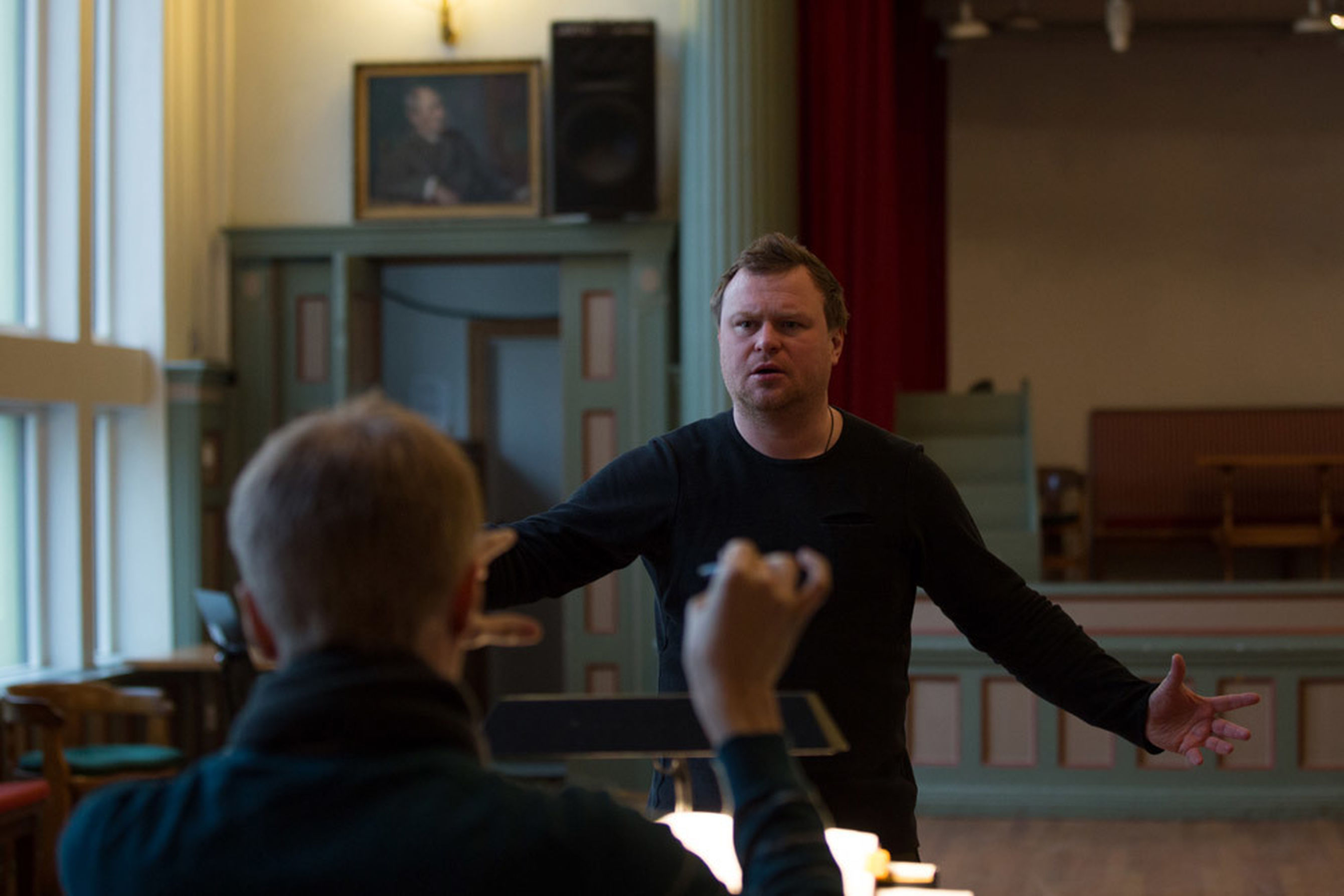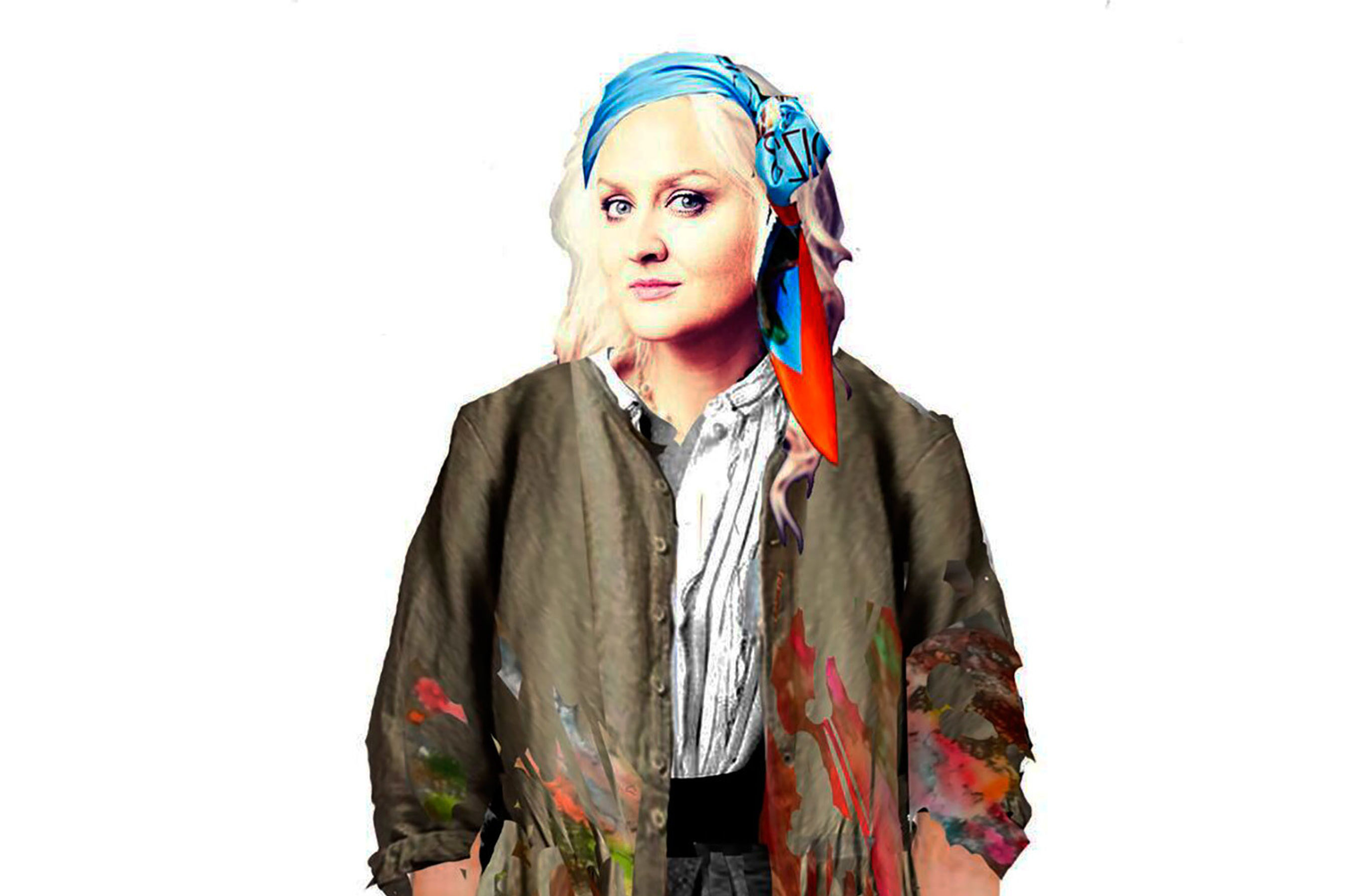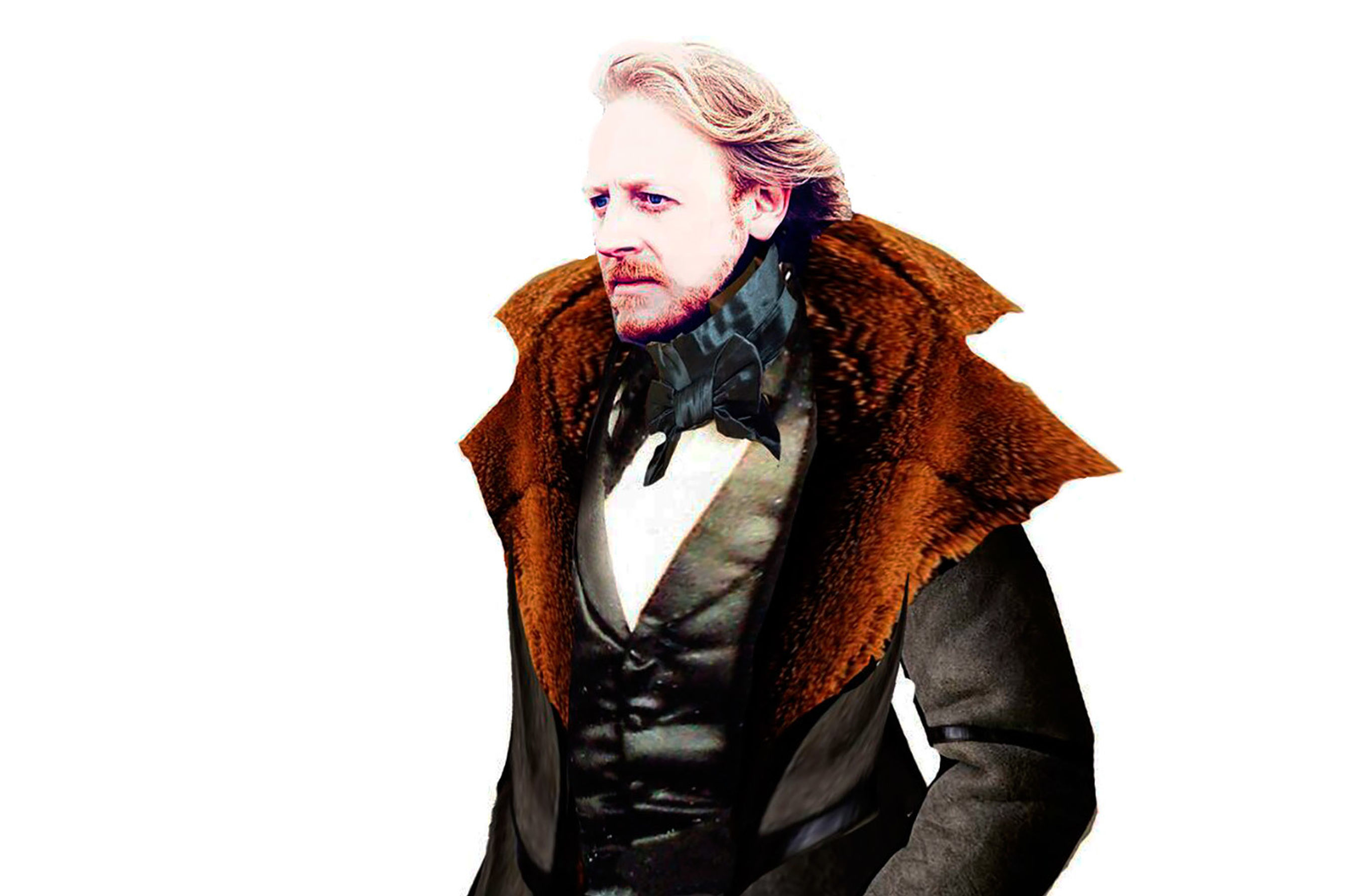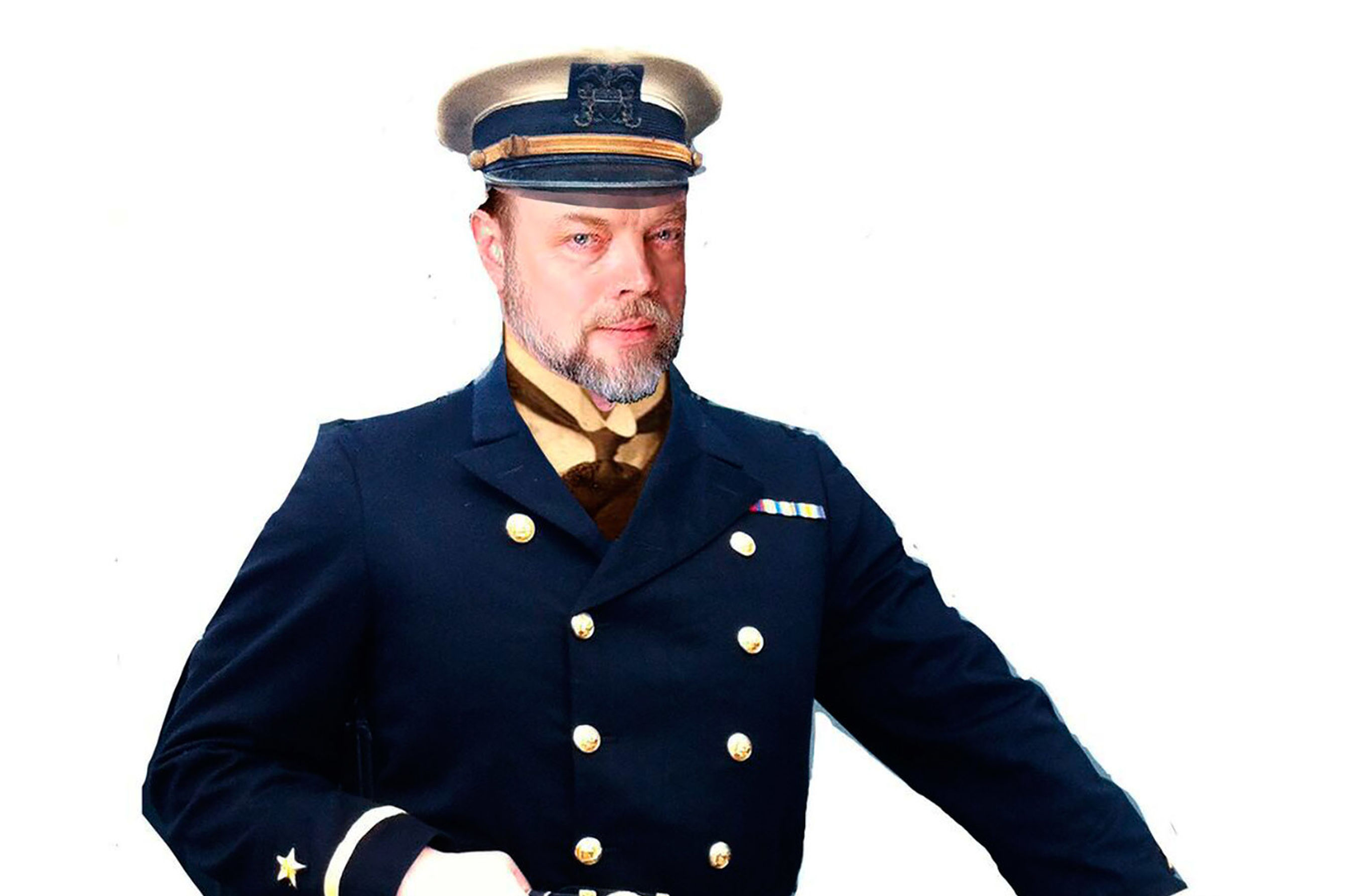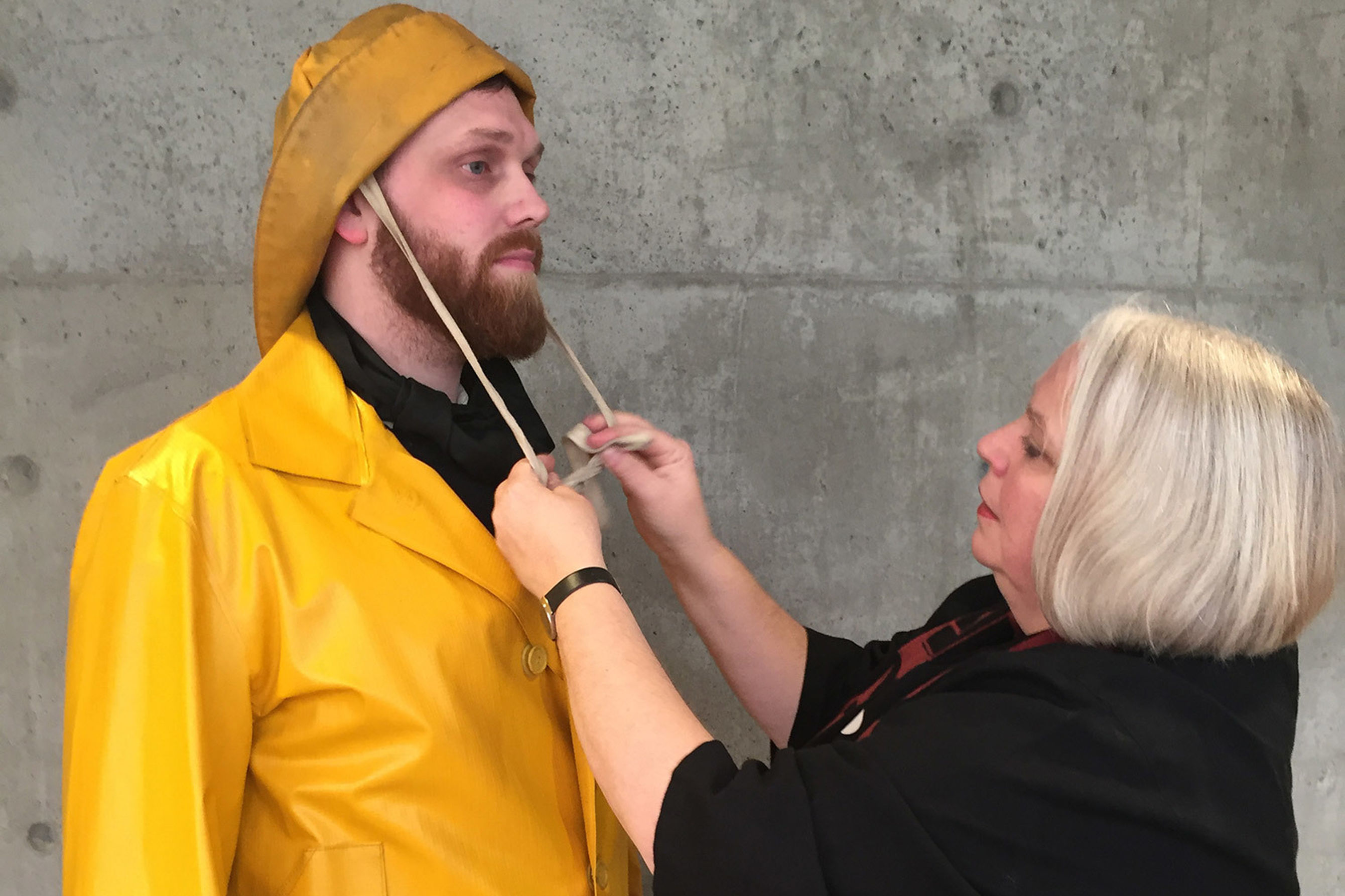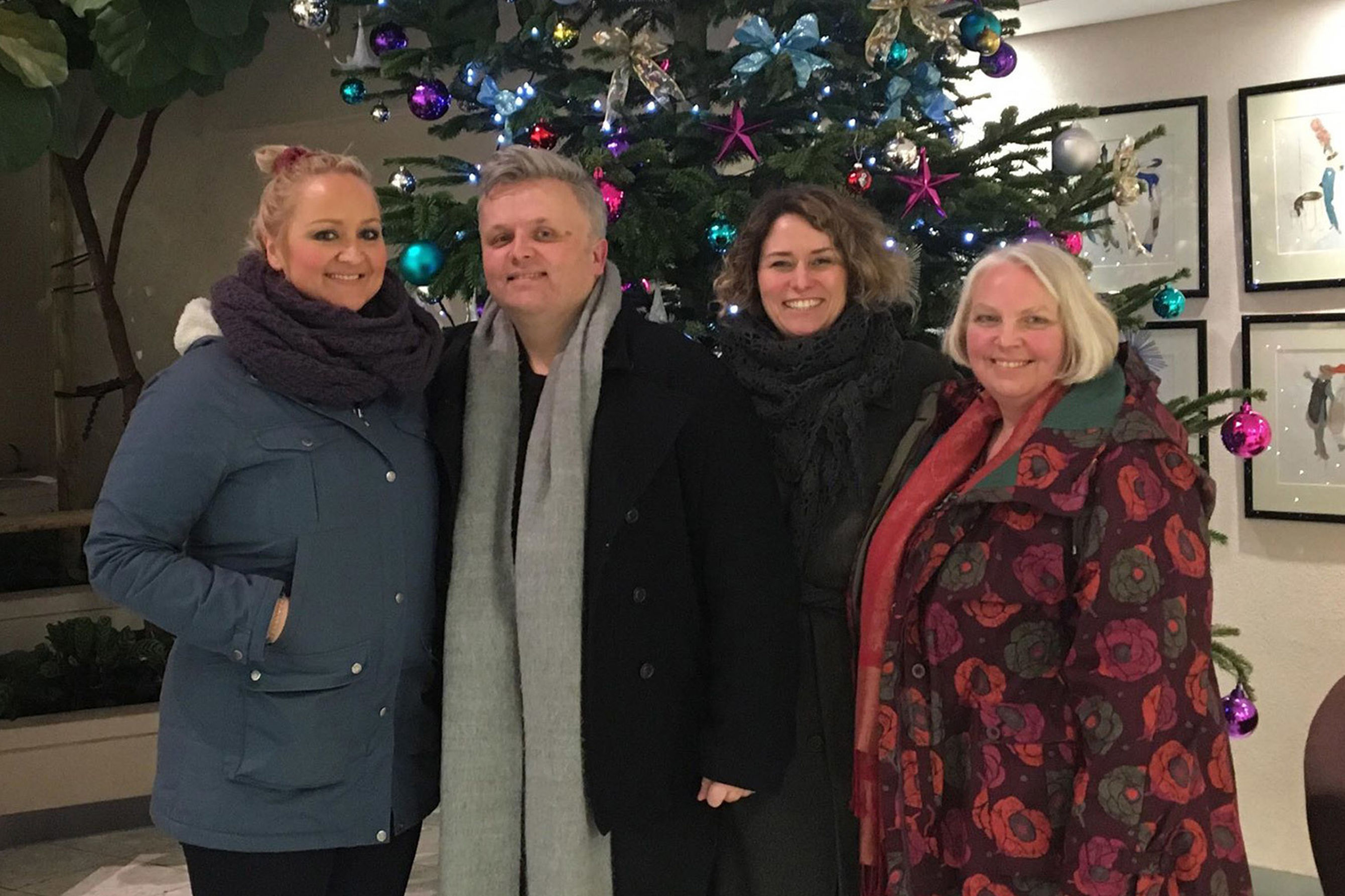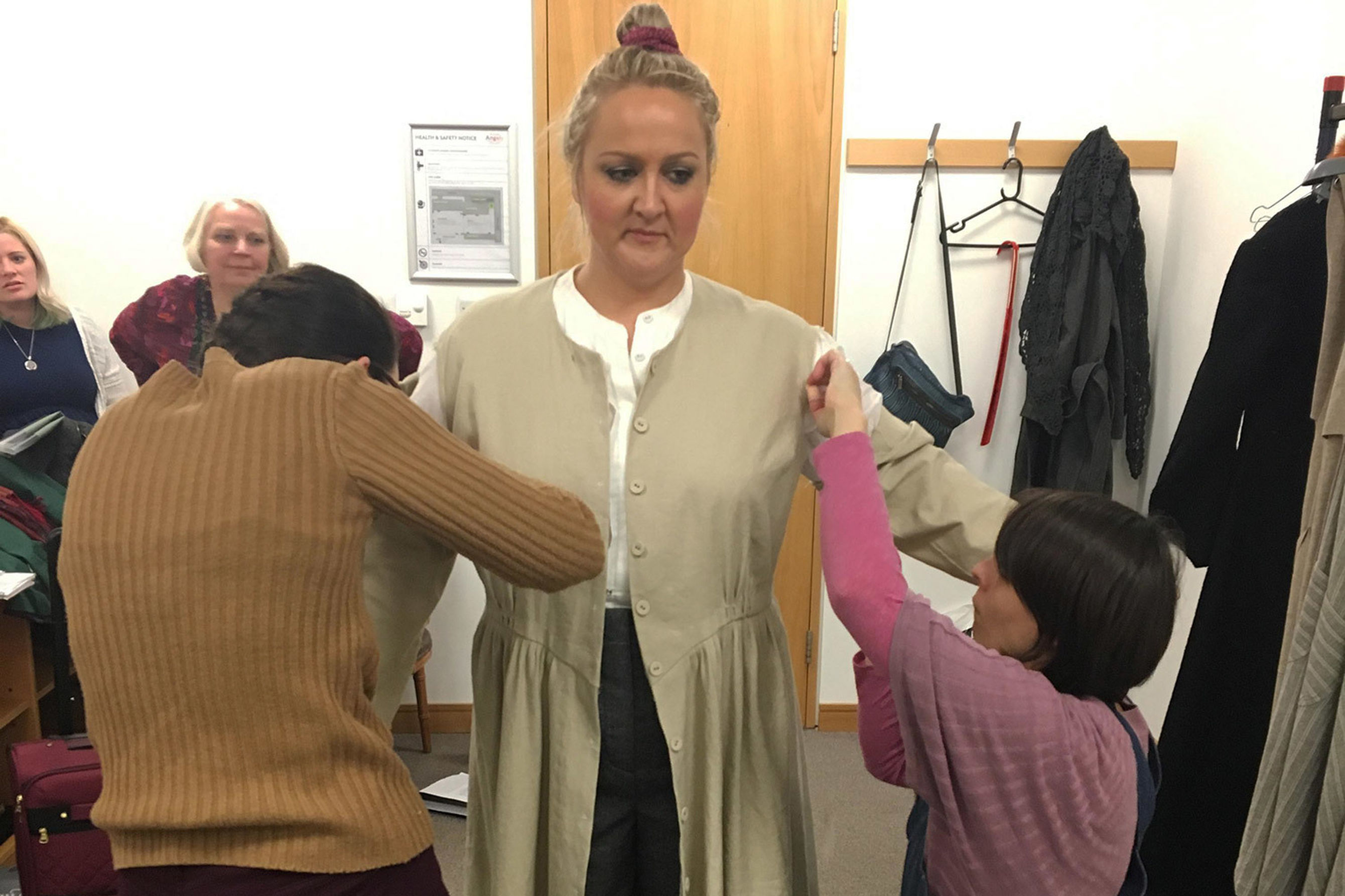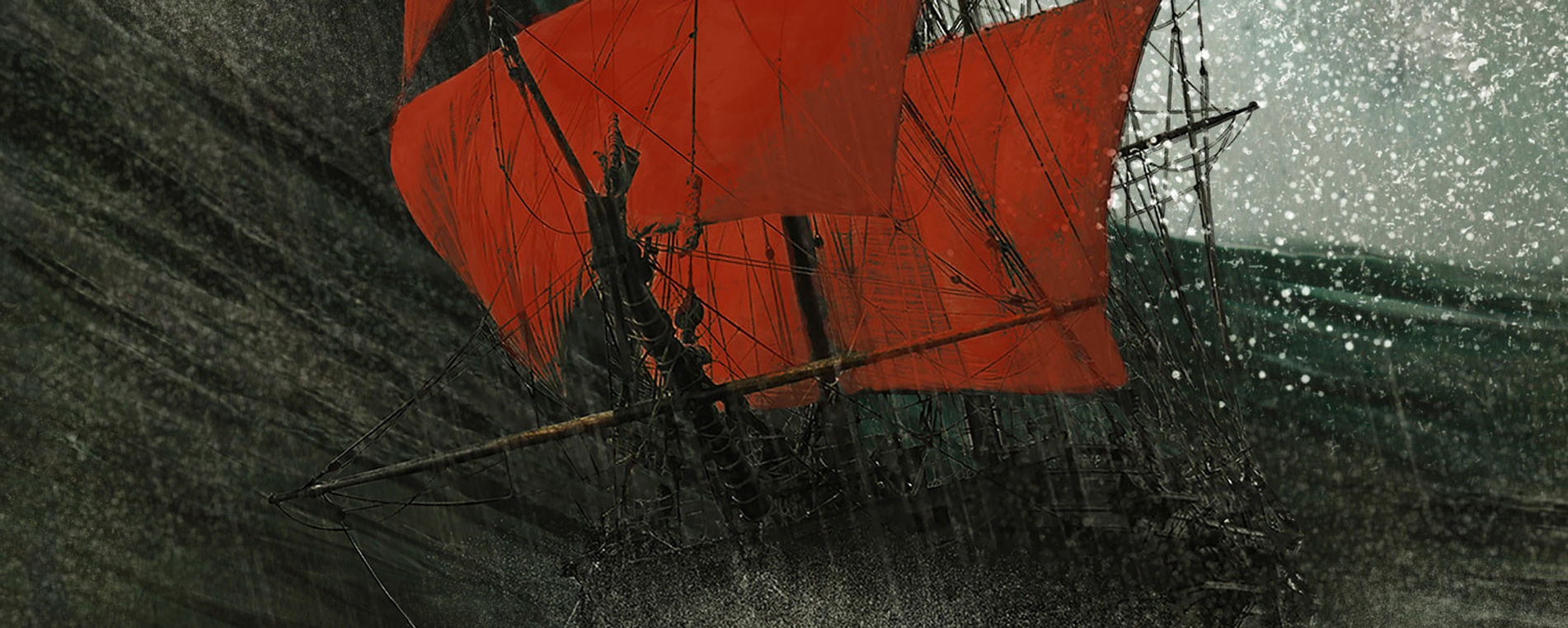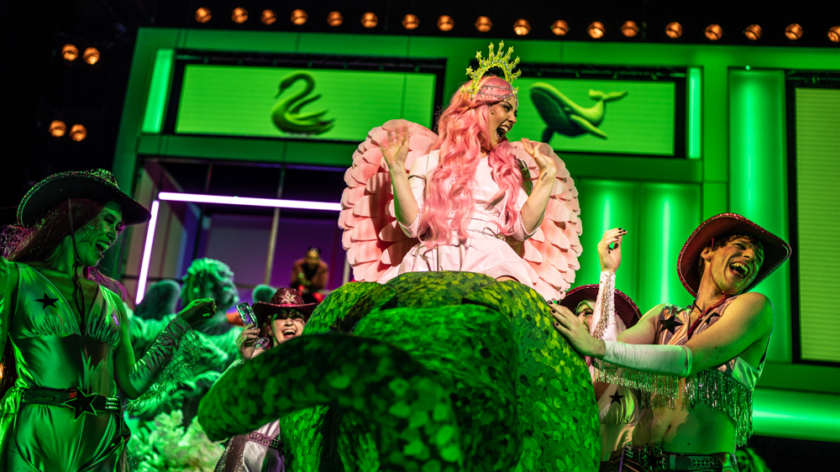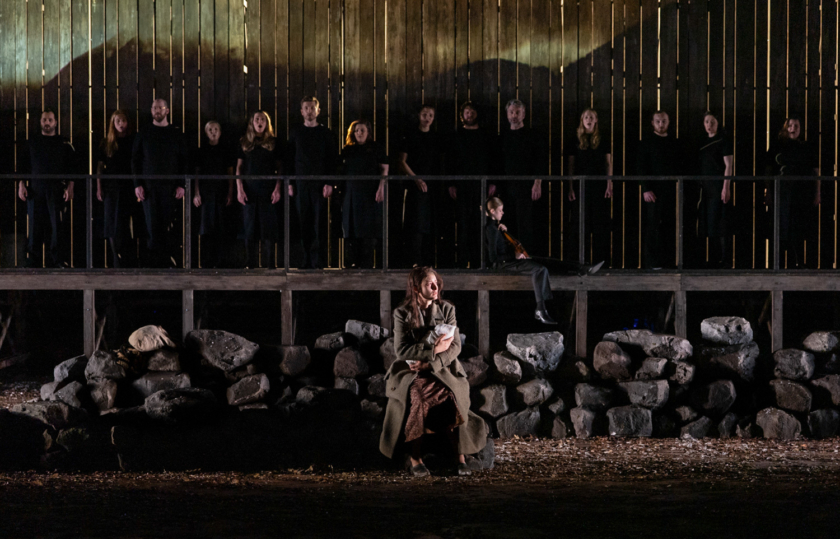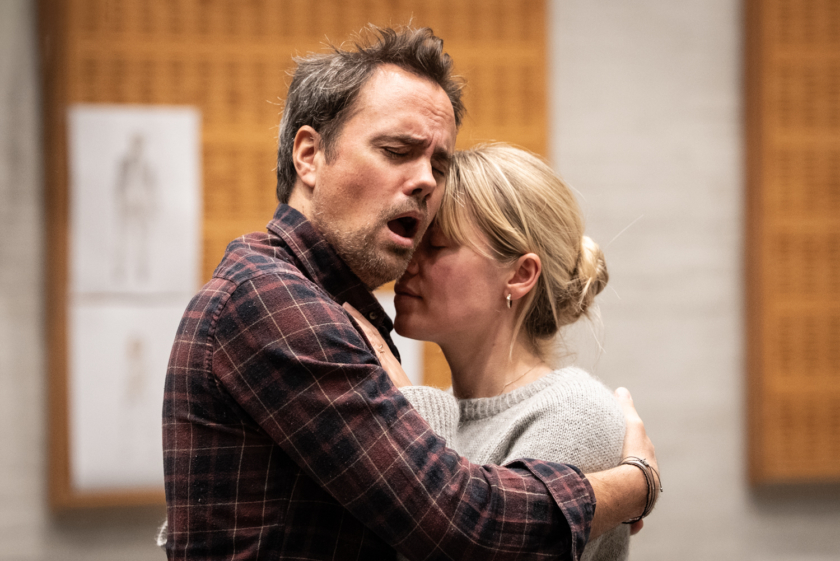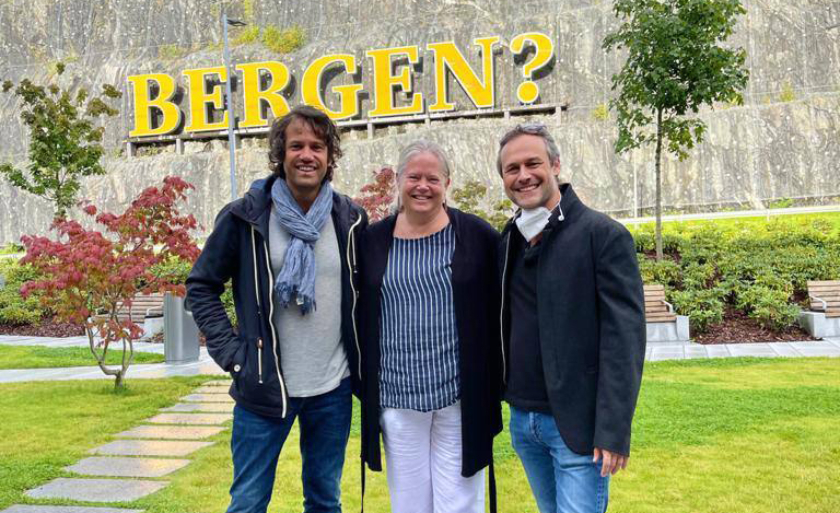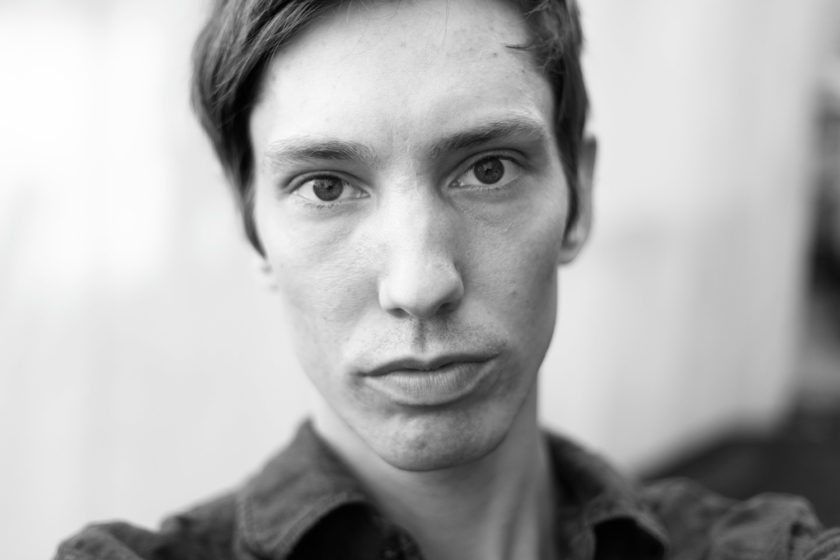Director's Diary
John Ramster, director of The Flying Dutchman, writes about the process of making an opera.
23 August 2017
I arrive in Eastbourne on the south coast of England to teach at a summer school for opera singers. I’m looking forward to it - I’ve worked here before and it’s always a terrific few days with lovely students of all ages. I’ve a few minutes before my first session begins and I’m sitting in the sunny school grounds, looking out over the cricket pitch as a groundsman mows the grass, listening to the seagulls, enjoying some calm before a busy day. Then the phone rings, and it’s Mary Miller from Bergen National Opera. Would I direct The Flying Dutchman?
The previous week I'd just been asked to direct a rare Gounod opera in London, and was on the point of signing a contract; it's a direct clash with Bergen, but a Wagner at BNO with the stellar cast Mary tells me about is impossible to refuse. It will be a swift design process but I know I can make it happen if I get the right team assembled. Ten minutes later... and I’m directing a new production of Wagner’s Der fliegende Holländer in the Bergen Grieghallen for BNO in six months time with a cast of international Wagnerian stars. I sit there, looking out at the groundsman still mowing the grass of the school cricket pitch. That all happened very fast...

23rd August - 9th September 2017
While I was still basking in the afterglow of being offered the job, I got a message saying BNO need me and my designer in Bergen as soon as possible to present our ideas for the show. So I begin to get my design team together. I immediately call Bridget Kimak, an incredibly experienced Canadian set and costume design based in London. I've worked with her on several shows over the years and I know that she can work in the detail I need and the speed the project will require. Bridget can fit the show in although she is currently designing a Shakespeare play and a Mozart opera. Like me, she knows this could be a terrific project. BNO give us a date for presenting our ideas for the show - I instinctively shy away from talking about having a vision or "Konzept" - and Bridget and I block out time in our diaries to explore the possibilities of our Fliegende Holländer.
The first meeting of looking at initial ideas with Bridget is huge - we always have long meetings but this is nearly 14 hours of talking through ideas, looking at references. We have been exchanging thoughts via email before the meeting, talking on the phone a lot, so we have an approach in mind before we actually meet up. I’ve been reading around the opera as much as I can, listening to it as much as I can. I feel like I’m up to speed, that the foundations of the show are firm in my mind.
The main female character of Senta needs to be more active than usual; the Holländer himself needs to change hugely as soon as he falls in love with Senta; I want to place the opera firmly in Norway in whatever era we end up choosing. Period costumes always contrast brilliantly with a non-naturalistic design aesthetic - audiences always react well to such a combination. I also know Bridget and I have been fixated recently on the beauty of different kinds of rust - google it, the patterns are so beautiful. Bridget shows me some of the work of the sculptor Richard Serra, and we do some research on when the last sailing clippers were still being used commercially - which turns out to be as late as 1948, much to our surprise. We settle on 1929 for our show, with Senta as an aspirant artist obsessed with the Holländer legend, with the Holländer himself palpably a creature of the 19th century, Senta’s father Daland maybe under pressure from the 1928 financial crash.
Armed with many photocopied references for set and costume, Bridget and I arrive in Bergen less than two weeks after that first phone call from Mary. The BNO bosses assemble to see our ideas and we nervously fill a conference table with all our thoughts, talking through in broad brush strokes how we see the opera taking form. They seem to like the ideas, pleasantly surprised we have so much to show them. We talk deadlines for set designs, costume designs, proplists, schedules, budgets. The BNO team seem terrific, can’t wait to be working properly with them all. Bridget flies home to start building the set model and I head out to the prison island of Ulvesnoy to revive Papirposeprinsessen for BNO. Rehearsals are fast and furious and the performances go well. On the plane back to London, I let my brain turn to a production of a staged Verdi Requiem for which I begin rehearsals next week. Having had a whole year until this point only directing Händel operas, now it’s all about Wagner and Verdi. I’m a very lucky chap indeed!

30 September 2017
Soooo, the big news is that our lighting designer is to be Jean Kalman, a globally celebrated artist who has worked at all the great opera houses of the world. I sent him an email, and he said yes! Sometimes the best things turn out to be the simplest. Today Jean, Bridget Kimak the designer and I are meeting at Bridget’s studio in East London to look at the set model with Odd Halstensen the BNO Technical Director. It’s a little nerve-wracking to be honest, as if Odd says the set is too big or too complex then we shall have to start again - with only a week to go before the design deadline. It’s also the first time I’ve seen Jean in a long time, and what if he hates the design?
Fortunately, the meeting goes well, with Odd immediately talking about technical details on the design. Bridget and I exchange a glance - we’re ok! Jean makes some great suggestions for tiny changes to the design and it’s so good to see him again. We first worked together in another millennium when I was a baby assistant director in my twenties at Glyndebourne Festival Opera then afterwards at the Royal Opera House in London, and it is amazing to reunite with him for this project - he has not changed one little bit, while I have become very grey indeed...
The BNO team seem terrific, can’t wait to be working properly with them all. Bridget flies home to start building the set model and I head out to the prison island of Ulvesnoy to revive Papirposeprinsessen for BNO. Rehearsals are fast and furious and the performances go well. On the plane back to London, I let my brain turn to a production of a staged Verdi Requiem for which I begin rehearsals next week. Having had a whole year until this point only directing Händel operas, now it’s all about Wagner and Verdi. I’m a very lucky chap indeed!
7 October 2017
To Bergen again with Bridget. For the first time we use the new airport terminal and we see the big yellow “Bergen?” sign as we arrive. We discuss possible meanings as we travel into the city and decide it is a deliberately enigmatic pun. We are back to present the set model and costume designs to BNO and talk everyone through our finished storyboard (our plan for how we use the scenery to tell the story of the opera). Directors and designers always dislike these days - how much detail to include, how much to leave out, how much are we looking simply to impart information efficiently, how much are we looking to keep everyone in the room engaged in our ideas. We get into Bergen very late at night and have a quick and extremely expensive drink in the hotel bar with some singers I know who are in town for a concert of the Mozart Requiem. Great to see them all again and I’m looking forward to working with some of them as part of the chorus for Dutchman. The chorus for BNO is a great mix of the Bergen-based Edvard Grieg Kor, professional singers employed specifically for the project and Bergen-based amateur singers. I know some of the EGK and local Bergen amateurs already from the summer production of Papirposeprinsessen (one EGK member was one of my first students many moons ago, so it will be amazing to work with her again) while some former students are coincidentally in the Dutchman chorus too.
Next morning, Mary Miller, all the technical bosses connected to the show gather in a conference room at the Grieghallen, plus BNO marketing people and representatives from the Grieghallen and the Bergen Philharmonic. We go round the table and everyone introduces themselves. I forget most of the names immediately, as I do every time! I try to remember people’s areas of responsibility and resolve to rediscover names afterwards. The presentation goes well, I try to turn a few metaphorical cartwheels and crack a few jokes among all the technical detail. People say they really like the design of the set and costumes. It has been a huge few weeks for me but especially for Bridget the designer, drawing up costume designs and making a few versions of the set model. On the plane back we talk through the one detail eluding us - how to characterise and use the undead crew of the Holländer’s ship in Act 3. We make a breakthrough and we both breathe a sigh of relief. It feels like the end of the beginning...
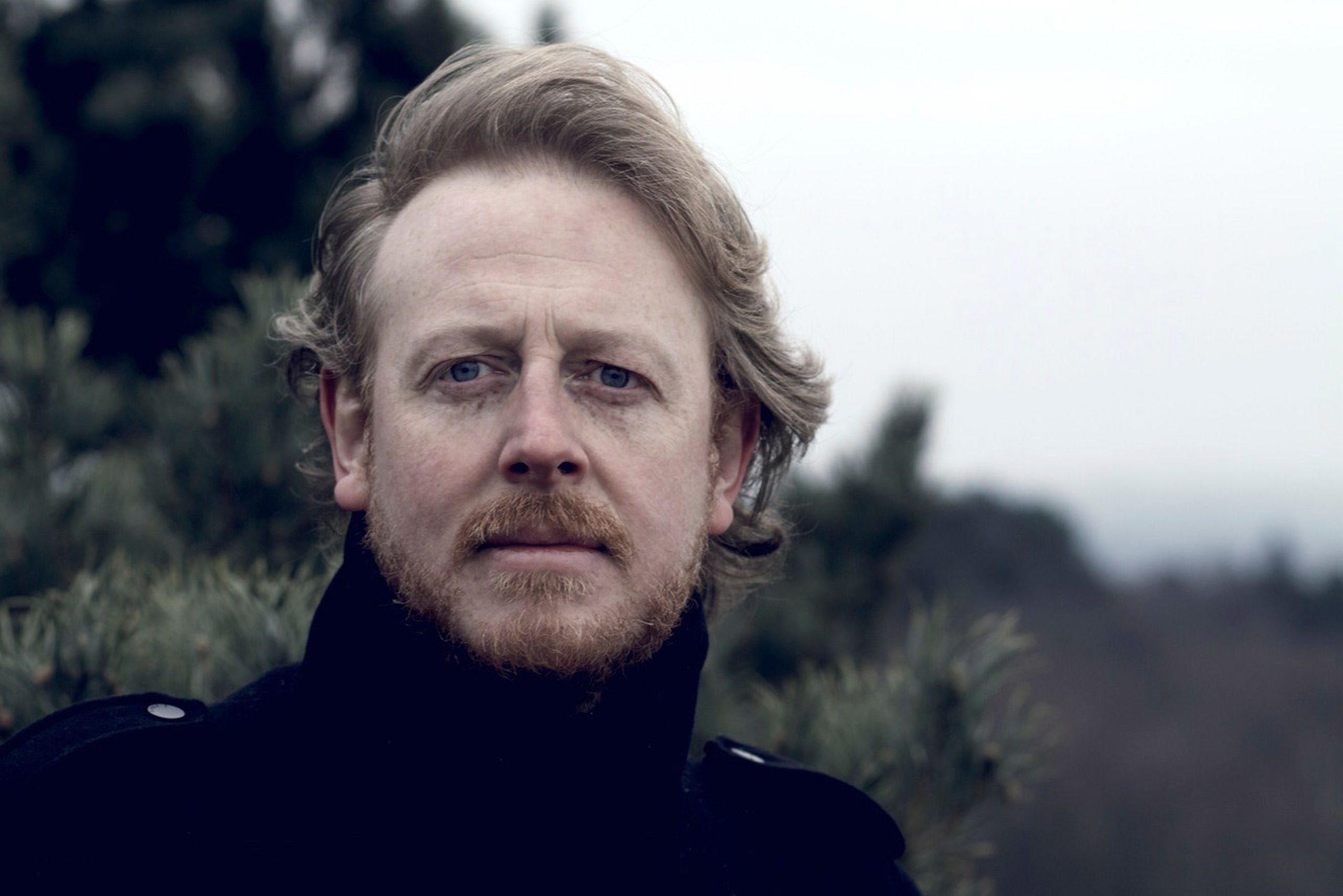
15th November 2017
Central London: I make my way through bustling Soho to the Groucho Club (a very exclusive private club for London showbiz types - mainly TV and film. I’ve only been there once before and am a little disappointed not to recognise anyone in the crowded bar). I’m there to meet a Dutchman. Well, not a real one... the very celebrated baritone Iain Paterson is playing our Holländer, and I wanted to make contact before rehearsals started, show him the set designs. He’s a regular at Bayreuth, the sacred home of Wagner’s operas, he’s sung Wotan there in their production of the Ring cycle. Casting doesn’t get any better than that. He lives and breathes Wagner, travelling the world all year round in various productions. He might be a global star but what a great chap he is. We settle down over some drinks and get to know each other, exchanging war stories, and talking about the opera. We discuss the Holländer’s character, Iain coming up with some great thoughts that are only possible from performers who have played the role before, just the kind of sub-molecular detail that is invaluable for our future collaboration. He mentions a couple of things about the Holländer’s first appearance that have always puzzled him in the times he’s played it before - and I make a mental note to find some solutions. In later days this starts to have some very interesting developments for the whole tone and impact of the show. I’m always open to the contributions of singers and designers. A production should be much more than the sum of its parts - I’d love for all of us to be surprised with the finished production. Plan everything as much as you can but leave room for surprises!
23 November 2017
But planning everything and leaving room for surprises takes time and effort. I’m a director who likes to spend days in libraries preparing, reading around an opera, immersing myself in the world of an opera. It takes me back to my university days, I suppose, taking notes, making mental connections that bring the opera into focus in my mind. Like a dog circling round the spot where he will eventually lie down, I circle an opera until it gives up some of its secrets to me.
So, in these weeks and months before rehearsals begin, I’ve been buying obscure second-hand books about Wagner, I’m spending a lot of time in the well-stocked libraries of the London music conservatoires, and I’m trying to see clearly the Wagner who wrote Der fliegende Holländer; not the mature composer of Tristan but rather the young and ambitious composer trying to establish himself and discovering the distinctive style of Der fliegende Holländer, so unlike anything he had composed before or after. There are plenty of books, many written by Wagner himself, wanting to make retrospective connections to the later works, pointing out the inevitable seeds of greatness in the thirty-year-old composer’s third opera. Wagner’s own successive revisions of the piece, deliberately omitted from our Bergen production, further blur the distance between the penniless composer in Paris, where the opera was mainly written, and the emperor of the Bayreuth Festival, writing his own history in an attempt to control his posterity. But the conductor Eun Sun Kim and I are sure the best way to realise the piece is to make it the version the 29-year-old composer wrote - a moment in time, not a piece confected over several decades.
I’m looking forward to making one final trip before rehearsals begin to Bergen with Bridget Kimak, my set and costume designer, where we shall meet up again with our lighting designer Jean Kalman, and make some decisions on the show. Modern technology is great but nothing beats everyone being in the same room.
30 November 2017
Just back from Bergen again where we had a full and final production meeting before rehearsals start. Odd Halstensen, our technical director, has decided where the set is being built, it’s on budget, all systems go! Jean our lighting designer has suggested a few tweaks that will make his work function better, and I’m so looking forward to the first day where we see his lights on our set as it moves around the stage.
It’s been great to watch Jean work as he develops his lighting plan - he is an industry legend, working at the top levels of international opera and theatre for so long, and his instincts are razor sharp, insisting on the best production values, always getting a little more juice out of the budget available, a stubborn unwillingness to compromise his personal standards.
Bridget’s set design is deceptively simple, which is a triumph, considering we have not been working on the project for very long. Simplicity usually takes a lot more time! What we have is a very distilled design which brings the narrative into clear focus: it positively invites the characters to populate it. And we have a revolving stage, which is always exciting for a director - we do like to have toys to play with! Plus I think audiences love the magic of a revolve as well, the option to have a transition of any speed from one scene to another. The production will feel fast and fresh, I think, with something new to say but not an imposition on the piece. I like to tell stories clearly, I never want to muddle or obscure the narrative. I’ll be looking for a lot of dramatic detail from the principals and chorus, the design throws the focus firmly onto them.
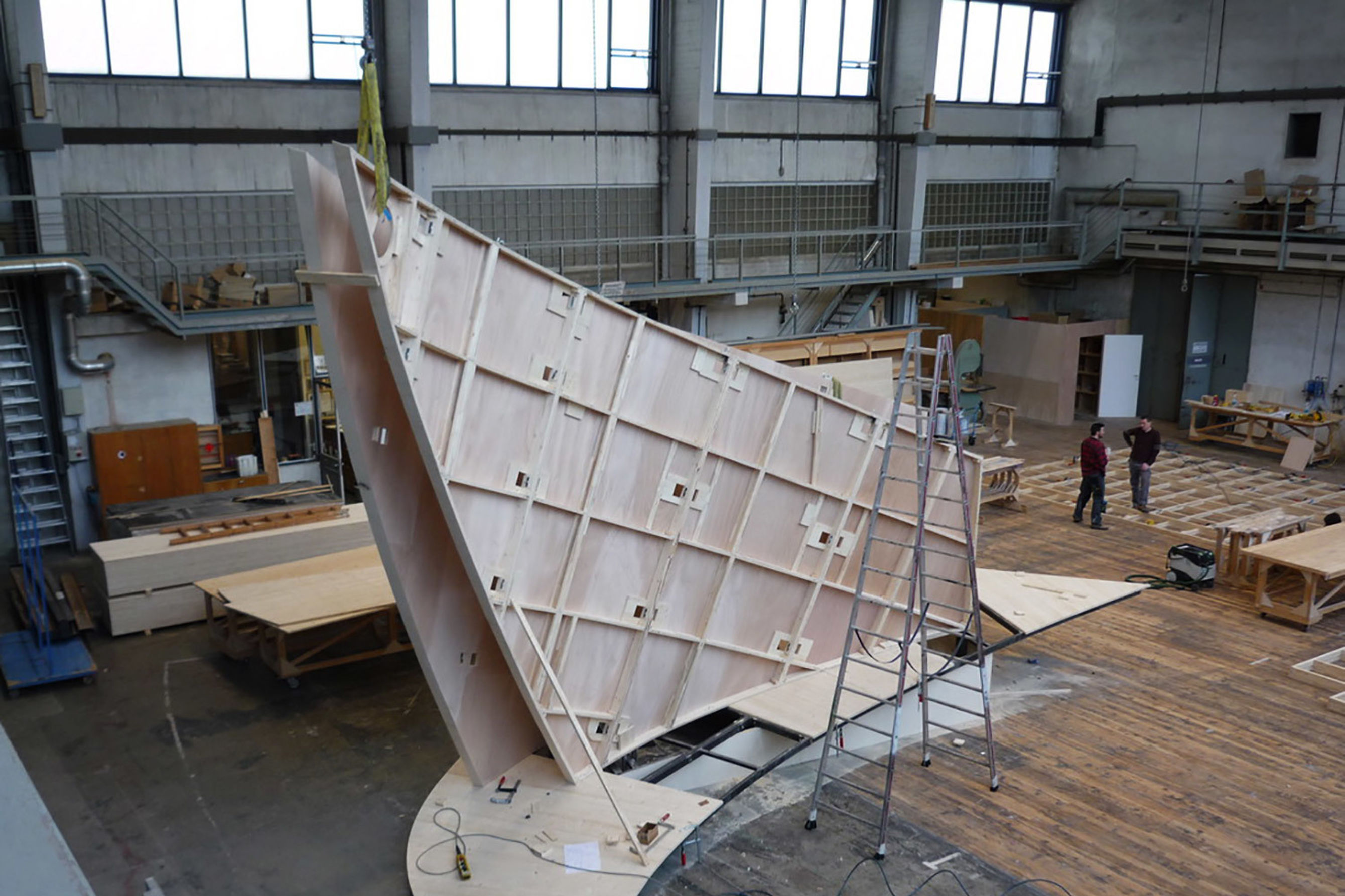
7th December 2017
I’ve had a few days free, able to listen to the piece again and again, study the score, make more of the connections I need to bring the production together in a coherent way for the audience. I’ve had a day with Bridget photographing the storyboard of the final set model before it is taken away by the set builders in Vienna. It all feels ready for our February rehearsals now.
I’m also being distracted by the small matter of a small touring production of The Marriage Of Figaro that I’m directing just before I return to Bergen for Holländer rehearsals. The two pieces and productions could not be more different so my mind is being stretched in two directions at the moment. Oh, and I need to start thinking about buying some Christmas presents too.... so much to do! I’ll pick up this diary again as the February rehearsals begin.
